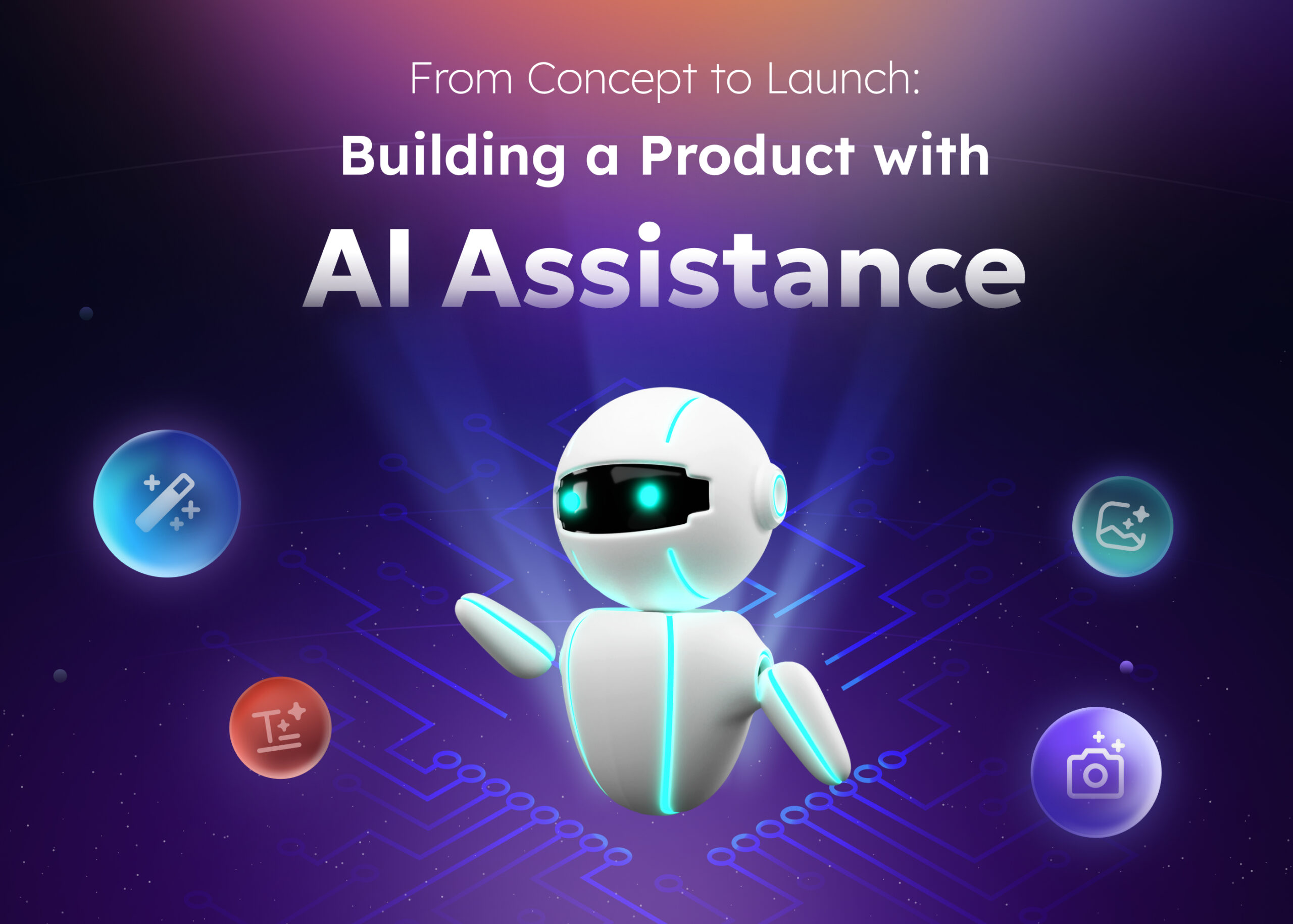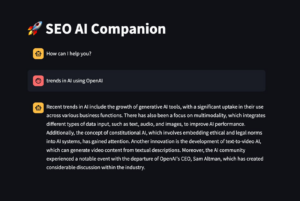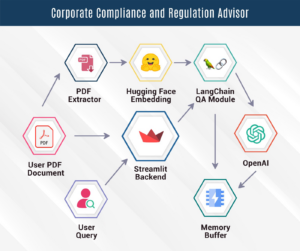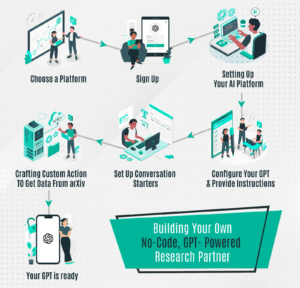Launching an AI product is challenging. It’s important to set the right milestones for the journey from idea to market. In this blog post about AI product launch milestones, we guide you through essential steps. Having a roadmap helps your project succeed, whether you’re a startup or a big company.
You’ll learn to set clear goals for your AI product launch and create a detailed roadmap. There is a focus on key milestones in your launch. You’ll also find strategies for hitting these milestones, and see why testing and feedback matter. This guide prepares you for AI product launch so you not only meet your goals, but perform well against competitors.
Defining Your AI Product Launch Goals
Before you start with your AI product launch, it’s important to know what success looks like. Clear goals help you see if your product connects with the target audience. Metrics might include engagement rates, adoption, revenue, or customer scores.
To set your launch goals, use SMART goals. SMART means Specific, Measurable, Achievable, Relevant, and Time-bound. Instead of a vague goal like getting users quickly, set a SMART goal like reaching 1,000 active users in three months. This helps you track progress and stay on course.
Align your launch activities with the defined outcomes. Tasks leading to the launch should aim at these goals. Marketing strategies, product timelines, and team roles need to connect with your success metrics. This alignment increases the chances of a successful AI product launch.
As you refine goals, gather feedback from stakeholders and users. Adjust to meet market needs. This approach can boost strategy and engage stakeholders, making them feel part of the development process.
Moving from setting your AI product launch goals to execution involves a detailed roadmap. Next, we will explore how to create your AI product roadmap to ensure everything is ready for a successful launch.
Map Out Your AI Product Roadmap
Creating AI product roadmap is key to managing complexity. The roadmap is a guide laying out the phases from start to launch. It begins with market research and identifying customer needs so the product meets what stakeholders want.
The process involves phases: ideation, feasibility tests, design, development, testing, and deployment. Recent data shows about 75% of product teams use roadmaps to track progress and updates. This fact highlights the roadmap’s role in keeping teams and external parties aligned.
In the planning step, mark clear milestones. These can be key outputs like prototypes, user interface completion, and test phases. A well-defined milestone brings project visibility and accountability. Focusing on these helps teams track their progress and pivot as required.
Each milestone in your AI product roadmap should also include success metrics. For user testing, you may want to aim for a specific number of tests or a required user engagement rate before moving on. Clear metrics help in evaluating progress and give direction to the team during development stages.
Spotting interdependencies between milestones helps ease bottlenecks during launch. Actions in development phases might rely on research insights, and insufficient preparation can create setbacks. Mapping these connections allows teams to better manage resources and timelines for a smoother AI product launch.
After outlining phases and marking milestones, you can move to identify specific deadlines in your launch schedule. This creates a task breakdown and clearer strategy for your AI product launch.
Identifying Key Milestones in Your Launch Timeline
Launching an AI product needs a solid grasp of key milestones. Recognizing these steps helps structure your AI product launch. It also stops vital tasks from slipping through the cracks. Below, we highlight essential milestones for your launch timeline.
First, you must do in-depth market research. This first stage helps you identify the target audience, their needs, and where your AI product sits in the market. Validating your market concept based on real feedback can lower the chance of post-launch failure.
After market research, prototype development is the next critical milestone. Here, you create a model of your AI product, showing your ideas. Using effective prototype testing yields helpful feedback on the product’s functionality and usability, which helps you make early tweaks.
User testing is the next step. Involve actual users to see how your product works in real life. Collecting feedback during this phase is vital. It helps refine your product and check if it meets user needs before the official launch.
When drafting your timeline, set firm deadlines for each milestone. Create a detailed launch plan covering all phases—from research to testing to the launch—each with deadlines. This ensures progress and keeps the team focused. Research suggests companies with clear timelines can cut product development cycles by up to 30%, making launches smoother.
Incorporating these milestones into your project management can build accountability within your team and improve resource use. Milestones serve as checkpoints. They allow strategy adjustments as launch day nears, setting your AI product up for success.
After defining a solid timeline with these milestones, the next step is crafting strategies to reach these launch goals fast. This transitions us to the next part: Strategies for Achieving Launch Milestones.
Strategies for Achieving Launch Milestones
For successful AI product launch, strategies to reach milestones is important. Developing structured approaches can ease complexities in AI product development. Below are several key strategies you should consider:
First, use iterative development cycles. This way, your team can adjust to feedback quickly. The product then evolves according to user needs and goals. Agile methods show results, with 87% of businesses saying these cycles improve efficiency. Continuous iterations allow for adjustments and features to be refined before the launch.
Next, plan for risks during product development. A survey found that 70% of projects hit surprise hurdles. This often delays schedules and raises costs. Identifying risks early and having a backup plan helps keep projects on course without straying from scope.
Also, support collaboration among departments involved in the AI product launch. Cooperation ensures alignment on goals and shared understanding of milestones. Research shows organizations with cross-functional teamwork enjoy a 25% uplift in success rates. Regular updates between teams can boost communication and improve coordination.
Finally, keep a feedback loop by assessing your progress frequently. This not only measures functionality performance but also adjusts your methods based on stakeholder insights. Ongoing evaluation lets you tackle new challenges and grab opportunities.
In summary, by applying these strategies—leveraging iterative cycles, preparing against risks, encouraging department cooperation, and framing feedback loops—you can steer through the challenges of your AI product launch and enhance the odds of hitting milestones.
Now, with these approaches in place, it’s time to move to another crucial phase of your launch process: testing and feedback for AI product readiness. Confirming all functions work correctly before launching builds a strong base for market entry.
Testing and Feedback for AI Product Launch
In the phase of an AI product launch, testing becomes crucial to make sure your product meets user expectations. It take time, usually two to four months, for thorough testing phases that confirm the AI functions as you plan. This ensures that you catch issues before going live.
User feedback is important to the readiness process. Involving beta users provides insights into their experiences and points out areas needing fixing. You can analyze feedback in two ways, quantitative scores reflect satisfaction, while qualitative feedback gives direct suggestions from users to improve.
You should also use various testing methods. A/B testing helps understand user interaction with the AI. Creating a good feedback loop lets developers adjust features based on user needs. This optimizes the product before its official release to maximize success.
In conclusion, testing and user feedback are crucial to confirm your AI product’s readiness for the market launch. By spending enough resources on these steps you reduce risks and enhance satisfaction among users. This way, you create a solid base for your upcoming product launch.
Executing the AI Product Launch
Once your AI product is tested and feedback integrated, It’s time for the AI product launch. This step matter, as the way you launch can influence your product’s market impact and success overall.
Finalize your marketing plans first. Strong marketing strategy align all promotional activities with goals for launch. Craft messaging that ties to your target audience, design engaging content for channels and prepare press materials spotlighting unique aspects of your AI product. Use storytelling to show product value and uses.
Organize launch events to stir customer interest. These could be webinars, demo days, or insider previews aimed at experts and early users. The aim is to create buzz around your product. Let influencers and early users join these events to broaden your reach. Research shows influencer marketing can return $6.50 for every dollar spent.
Preparing for distribution and availability is also key. Make sure your supply chain can handle expected demand. Build partnerships with distributors and retailers and finalize your e-commerce strategies if direct-to-consumer sales is in plans. You need to deal with demand changes; 57% of products fail from bad market prep. Having enough stock and logistics helps ease disruptions and guarantees smooth customer experience during launch.
Communication with internal teams matter too. Customer support, sales and marketing teams should share info on product features, benefits and potential challenges. This teamwork leads to better customer experiences. Everyone offers a unified message and clear info to customers.
With all set, execute your launch following the set timeline, monitoring key performance metrics close. Change strategies based on feedback from customers and market responses. Stay flexible and responsive. This can set you apart in keeping customer interest after launch.
In summary, executing an AI product launch involves solid planning, smart marketing, and teamwork to grab market attention. After launching, focus shifts to evaluating and refining your approach based on early experiences to optimize your product onwards.
Post-Launch Evaluation and Iteration
After the AI product launch excitement decreases, focus should shift to a key phase: post-launch evaluation and iteration. This stage is vital for making certain that the product meets expectation. It should deliver lasting value for users. First steps should includes monitoring performance and collecting customer feedback.
Gathering feedback is critical. A study shows 85% of customers prefer brands that ask for feedback. Surveys, interviews, and engaging users can provide insights into their experiences. This feedback can helps teams identify pain points. Opportunities for enhancements and must-have features appear from understanding user needs.
The following step is using iterative development based on user insights. This approach lets teams make changes quickly. It focuses on refining the product steadily. Companies using agile methods can apply updates easily to avoid a total product redesign. This keeps products relevant and boosts customer satisfaction and loyalty.
Finally, planning future updates and improvements matters for staying ahead. Setting new goals based on feedback and predicted market shifts is important. Companies should build a roadmap for future iterations, including user insights and tech advancements. This ensures the AI product stays in tune with user demands and latest tech developments.
Conclusion
Bringing an AI product to market needs thorough planning. This article discussed how to set AI product launch goals, build a product roadmap, and track key milestones. Effective strategies help reach milestones while constant testing can ensure your AI product is prepped for launch and long-term market presence.
With knowledge of what makes an AI product launch successful, it’s time to act. First, set clear goals for the launch, and then map out your timeline. It’s vital to keep evaluating even after launch to ensure your product remains competitive.
During the journey of your AI product launch, face the challenges that show up. A strong approach and a focus on quality will help you take your idea further, leading to a launch that opens the door for future prospects.
About AI Product Accelerator
The AI Product Accelerator is a structured 12-week program designed to empower both aspiring and experienced AI entrepreneurs in building and launching valuable AI products.
Join our community and take the first step towards turning your AI ideas into market-ready solutions by enrolling today at aiproductaccelerator.com!




